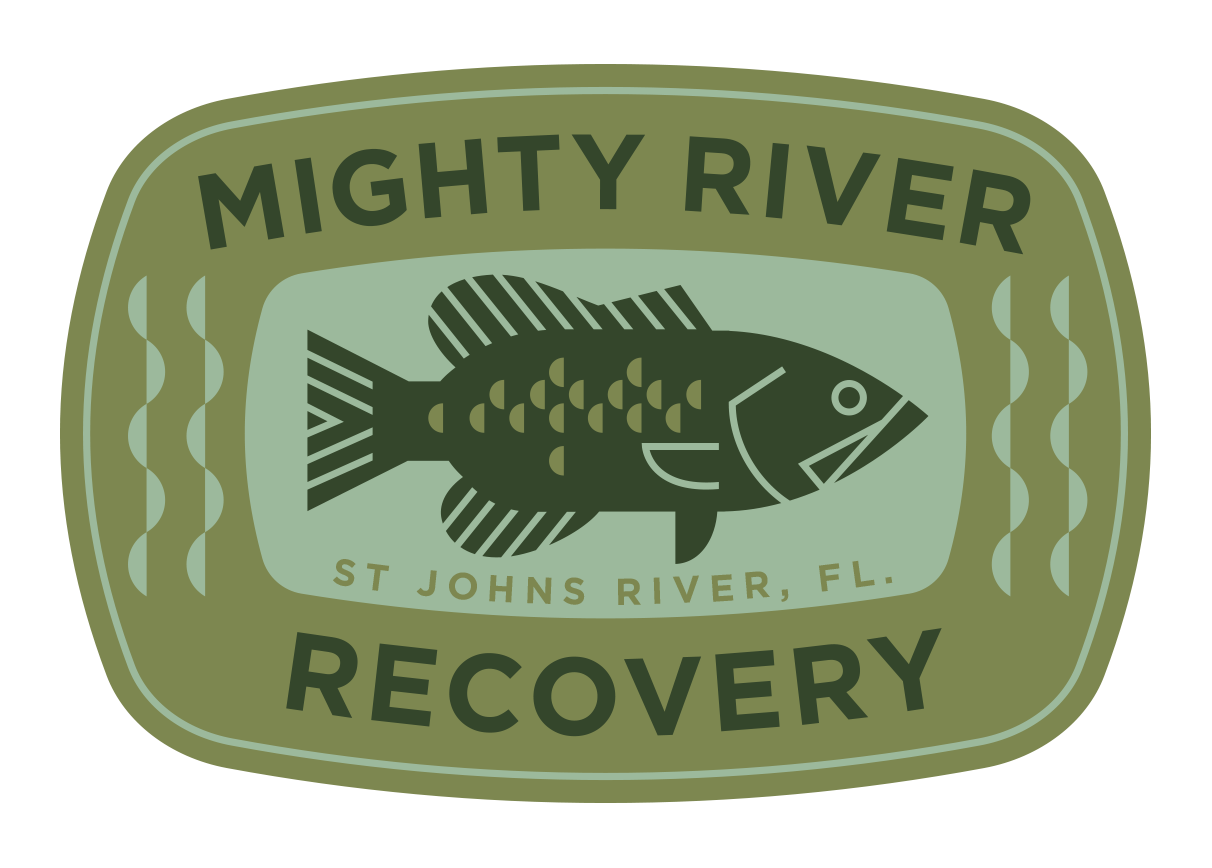St. Johns River Enclosure Efforts.
In a project implemented by the Florida Fish and Wildlife Conservation Commission (FWC), several groups have joined together an effort to reintroduce vegetation to the St. Johns River.
Mighty River Recovery recently joined this initiative, however, we want to inform our members of the details, not just paint a rosy picture.
In 2017 and 2018, the St. Johns River experienced prolonged flood stage levels following major hurricanes. As a result of the high water, submerged aquatic vegetation (SAV) was wiped out of nearly the entire river.
While this habitat loss was a notable set-back, it’s important to look at the bigger picture.
Prior to the flooding events, only select areas of the St. Johns River contained SAV. Lake George was an example. However, well prior to the events of 2017-2018, the St. Johns River had lost, and was continuing to lose, significant amounts of SAV throughout the basin.
Veteran river anglers report of great stands of eelgrass and other SAVs in areas including Lakes Beresford, Dexter and Spring Garden Lake, located in the river’s middle basin, near DeLand.
Large amounts of SAV have also dissapaered from much of the river’s natural spring runs, including Blue Springs, Alexander Springs, Juniper Springs and the Silver River.
And huge stands of eelgrass in the river’s lower basin (north of Palatka) had continued to dwindle, year after year.
Re-vegetation efforts utilizing enclosures currently concentrate on Lake George and select areas to the north. These efforts have been championed by dedicated staff of the Florida FWC as well as members of Mighty River Recovery, and offer promising results. Several members of the fishing community have also donated countless hours and dollars to these initiatives.
Results from eelgrass enclosure after one growing season
It’s important to note: initial studies have shown these efforts work. Submerged aquatic vegetation is growing, often at incredible rates. The immediate conclusion is that herbivores (plant eaters) are mowing down any attempt for the river to re-grow native grass. Enclosures keeping herbivores out grow plants almost immediately.
Mighty River Recovery is helping to further organize and activate the public for SAV regrowth projects. In addition, we feel more must be done to recognize and combat the further decline of fish and wildlife habitat across the entire river.
More dialogue and study is needed regarding:
What herbivores are responsible for prohibiting initial growth
The effects of exotic species, including tilapia and armored catfish
The perceived sedimentation increase, and how it relates to current management practices
Increasing manatee populations in the St. Johns River, how they are effected, and effect us
Watershed practices, including development, fertilizer and herbicide use
By joining or donating to Mighty River Recovery, you can be assured we will be investigating the loss of SAV further, while working with the scientific and management community on solutions.

